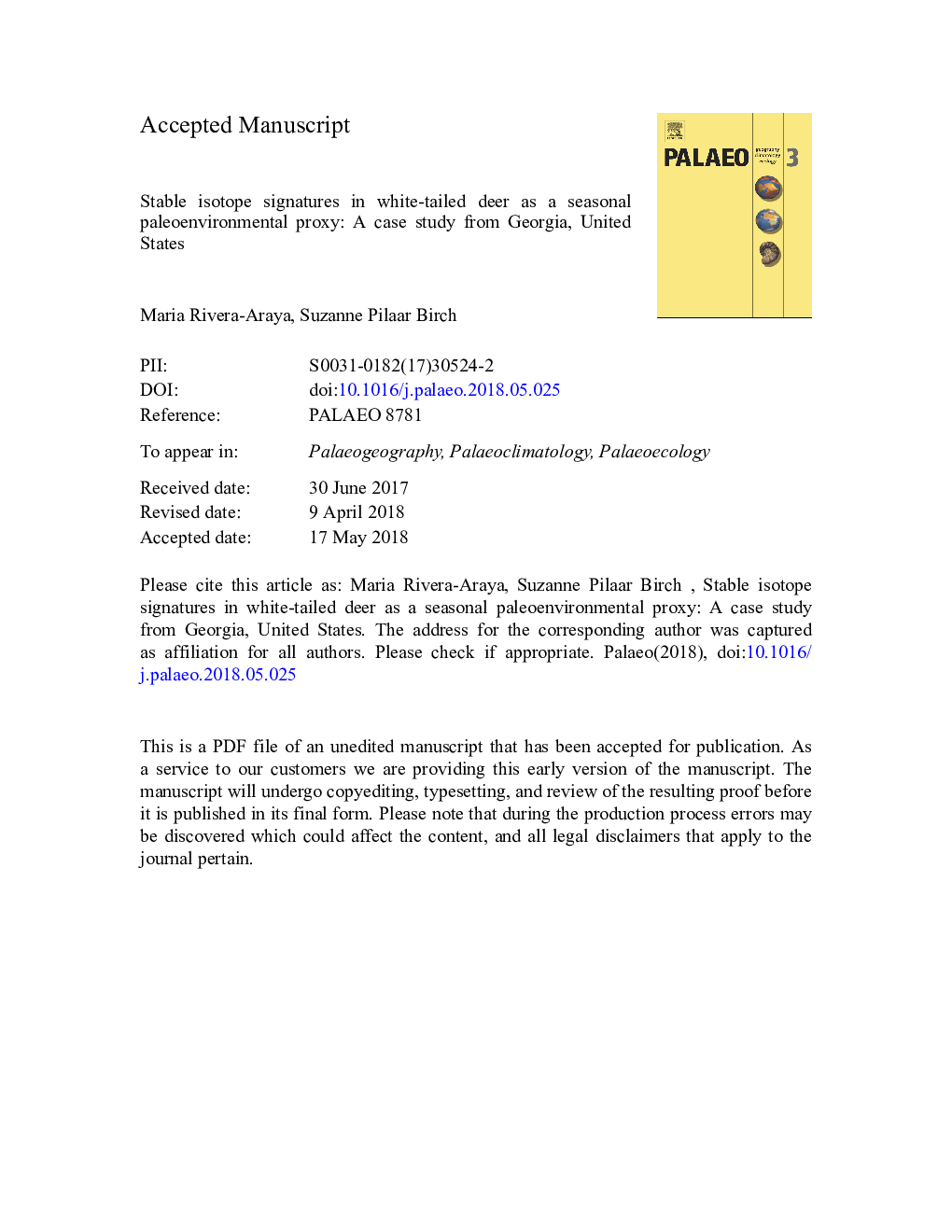| Article ID | Journal | Published Year | Pages | File Type |
|---|---|---|---|---|
| 8868124 | Palaeogeography, Palaeoclimatology, Palaeoecology | 2018 | 35 Pages |
Abstract
Oxygen and carbon isotopes from herbivore teeth have previously been used as paleoenvironmental proxies. However, their use in white-tailed deer (Odocoileus virginianus) remains rare. Here, we present the results of analysis of sequential sub-samples from second and third molars of wild and non-wild deer from Georgia, United States in order to assess their application in humid subtropical climates. In wild deer, enamel carbonate δ18O corresponds broadly to the recorded precipitation δ18O over the 10-month period of tooth formation, capturing the rainfall seasonality across the physiogeographic regions of the state. Non-wild deer show significantly lower values compared to both measured and modeled δ18O precipitation. While δ13C in tooth enamel carbonate appears to reflect diet, it does not reflect seasonality in either population. The δ13C and δ15N from bone collagen values suggest that diet and source of drinking water influence the potential of white tailed deer tooth enamel carbonate to record the δ18O seasonality in the study area; therefore, special attention on the provenance of deer are necessary for obtaining accurate paleoclimate reconstruction.
Related Topics
Physical Sciences and Engineering
Earth and Planetary Sciences
Earth-Surface Processes
Authors
Maria Rivera-Araya, Suzanne Pilaar Birch,
